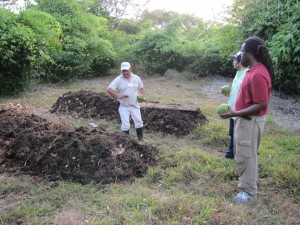Article by Laina Schneider
Bluefields is a colorful port city on the Caribbean coast of Nicaragua known for its diverse population of different indigenous and Afro-Caribbean peoples. It is also one of many places in this area facing alarming rates of youth unemployment. The municipality has limited access to basic services, including education, due to its remote location in the isolated South Atlantic Autonomous Region. With regional population on the rise, rural youth are commonly involved with drug trade activities or are forced to migrate out of the area to find work in Managua, the capital city.
Last month, at the request of the USAID mission, an innovATE team traveled to Bluefields to explore the region’s need for vocational education and training that targets at-risk youth. The USAID mission hopes to improve workforce development programs and create more opportunities for employment in the southeast region.
The innovATE team met with training program leaders, NGOs, schools, and private sector stakeholders to assess what opportunities exist, and how to leverage their strengths to better reach at-risk youth. At a John Deere and Caterpillar distributor, the team observed a unique program with state of the art facilities, that gives employees on-the-job training for positions in the industry. The innovATE team hopes to help the mission design more programs like this, to affect lasting change in the southeast region.
Highlights from the trip included visits to a cacao plantation, a bamboo production farm, palm oil plantations and a fish processing plant. At each of these locations, the team observed potential for increased job opportunities, if qualified candidates are available. “The key,” said innovATE director Tom Hammett, “will be to create effective linkages between companies and schools. Only through partnerships will supply of graduates and demand for employees be matched effectively.”
The establishment of partnerships will require effort on both sides. Improving curricula, training teachers and building new facilities will be necessary to adequately prepare students for jobs that are available close to home. For the private sector, this will mean putting more time and effort into working with school administrators and teachers to provide students with experiential learning opportunities, such as internships and co-op placements.
With so much opportunity and a lot of work still to be done, the innovATE team is continuing to work with the USAID mission to refine recommendations and develop a plan for the future.
“All parties seem excited about moving forward,” said Hammett, “Economic development of this region will increase jobs, ensure that migration out of the region isn’t the only option for at-risk youth and give Bluefields hope for a brighter future.”


